|
|
Fire temple as an institution for housing a
constantly burning fire goes back to the time of legendary Pishdadian
king, Houshang (Hoshang).
Ferdowsi’s ShahNameh (Epic of kings) relates
how for the first time a man made fire came to be in times of antiquity.
Thereby the early man that Houshang’s generation represented found a
source of heat and light that empowered them to have more control over
their environment. Without any means of readily producing it (in ancient
times), a fire was kept at a central location constantly ablaze. From
that central fire households would draw the fire they needed for cooking
or heating their homes, and so the institution of fire temple came to be,
dating back to early Indo-Iranians. In time fire temples came to serve as
libraries, hostels, and even as medical centers, and the people who
maintained the fire temples came to wield great influence, respect and to
possess knowledge.
The tradition of fire temple was already well
woven into the social fabric of the Iranian branch of Indo-Europeans by
the time of Zarathushtra. Fire temples were adapted into the Zoroastrian
religion, and served as center of most religion activities. In some areas
of the land with warmer climate, open air fire temples were in use.
When the Achaeminians established world’s
first empire over the near East, southern Europe and North Africa, the
median priesthood, known as Magi, was absorbed into Zoroastrianism and in
time came to have a defining influence Zoroastrian priesthood. Much of
the purity laws governing, the fire temples was due to the influence of
the Magi.
The institution of fire temple and the ritual
fire it houses has since become an integral part of the Zoroastrian
religion practices. Fire temples could be found all over ancient Iran,
most of them fueled by wood. However, there are traces of ancient fires
that used natural gas as fuel. One notable example was the Azar Goshnāsp
temple located in the Azerbaijan province of Iran, that served as a site
of pilgrimage for the Sassanian royalty.[ii]
With the fall of Iran to Arab invaders forcing
their religion at the edge of the sword, and as that religion take hold in
Iran, many of the fire temples were forcefully and often violently
converted to mosques. Coming down to the 21st century, only a
small number of fire temples still stand in the land that gave rise to
them.
The current site housing the fire temple of
Kerman used by less than 2000 remaining adherents of the Zoroastrian
religion in that ancient Iranian city was dedicated for that purpose in
early 20th century.
[iii]
An older temple built at that site houses a wood burning fire.
In early 21st century a new temple
was inaugurated in the same complex where the older temple is located.
The two temples are within 350 meters of each other. The new fire temple
is fueled by natural gas, and came about as a result of a generous
donation by a Kermani Zartoshty. The structure was built with Kermani
marble stones. The new temple was inaugurated with great festivity as
Zoroastrians from all over Iran merged on Kerman to be a part of that
event.
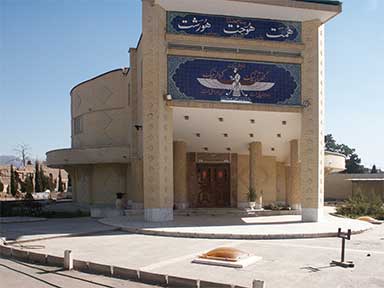 |
|
Entrance to the New
Fire Temple |
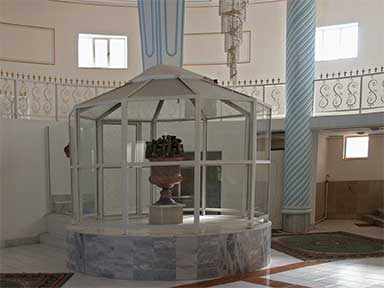 |
|
Enclosure housing the
fire shrine inside the temple |
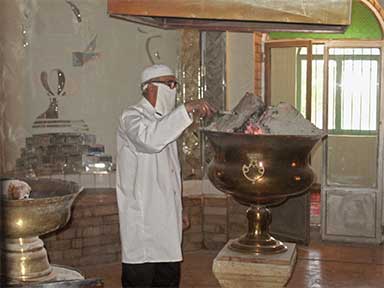 |
|
Mobed "priest"
attending the sacred fire in the old temple as he recites verses
from the Avesta |
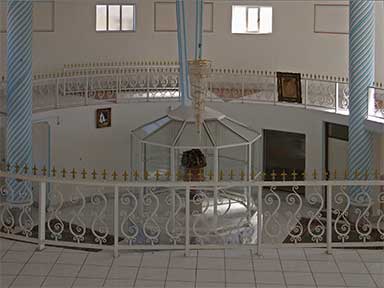 |
|
View from the audience
chamber of the upper level |
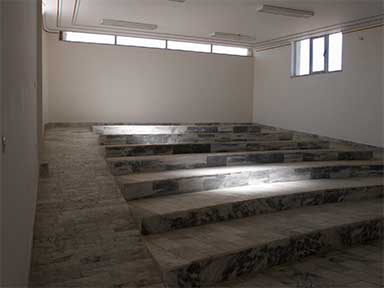 |
|
Audience chamber on
the upper floor |
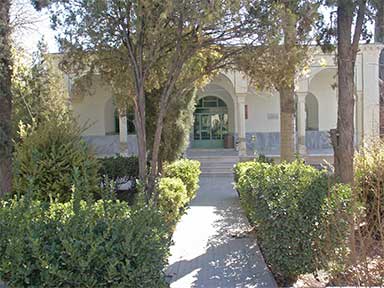 |
|
Entrance to the old
temple |
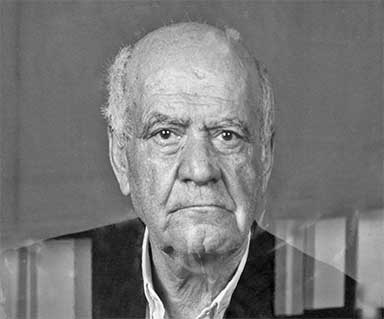 |
|
Benefactor of the new
temple, Mr. Hormuzd Oshidari |
[i]
This article was posted on Dec. 9, 2004
[ii]
Eslami, Pouran, Āzar Goshnāsp – An ancient Zoroastrian city and
temple (Western Azarbaijan, Iran), ĀTAŠ-E Dorun: The Fire Within
- Jamshid Soroush Soroushian Memorial Volume II, 1stBooks Library
Publishers, Indiana, 2003, pps. 163-170.
[iii]
Soroushian, Jamshid, ‘History of Zoroastrians of Kerman’ (Farsi
language book), Aalmi va farhangi Publishers, Kerman, Iran, 1991, pps.
132-133.
|